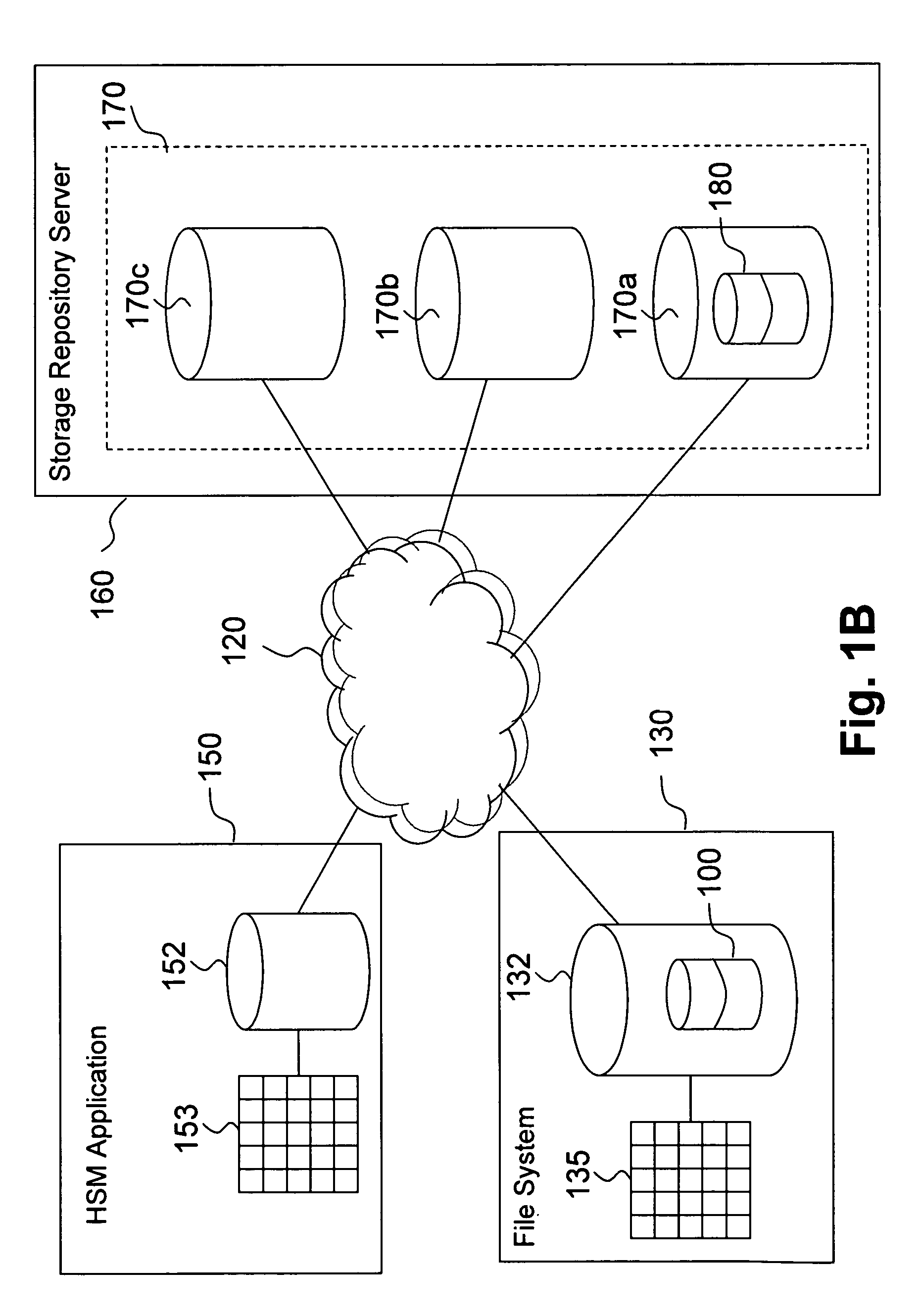HSM two-way orphan reconciliation for extremely large file systems
a file system and two-way orphan technology, applied in the field of data storage and management, can solve the problems of stub files no longer having an associated server object, file system client orphans and server objects, and no longer referenced server objects by the file system hsm clien
- Summary
- Abstract
- Description
- Claims
- Application Information
AI Technical Summary
Benefits of technology
Problems solved by technology
Method used
Image
Examples
Embodiment Construction
[0024]The presently disclosed operation of performing HSM two-way orphan reconciliation for extremely large file systems provides a general mechanism for identifying both file system client orphans and server object orphans, which can result from system crashes or system configuration changes, in a single pass. One embodiment of the present invention achieves this result by identifying both file system client orphans and server object orphans in a single pass operation, and further allows the orphan identification process to be segmented for parallel processing. The single pass orphan identification and parallel processing capability is achieved by utilizing a routine which matches a list of migrated files generated from the file system information with a list of migrated files generated from the storage repository information, where each list is sorted based on a unique migrated file identifier.
[0025]This embodiment therefore provides a highly scalable means to identify both file s...
PUM
 Login to View More
Login to View More Abstract
Description
Claims
Application Information
 Login to View More
Login to View More - R&D
- Intellectual Property
- Life Sciences
- Materials
- Tech Scout
- Unparalleled Data Quality
- Higher Quality Content
- 60% Fewer Hallucinations
Browse by: Latest US Patents, China's latest patents, Technical Efficacy Thesaurus, Application Domain, Technology Topic, Popular Technical Reports.
© 2025 PatSnap. All rights reserved.Legal|Privacy policy|Modern Slavery Act Transparency Statement|Sitemap|About US| Contact US: help@patsnap.com



